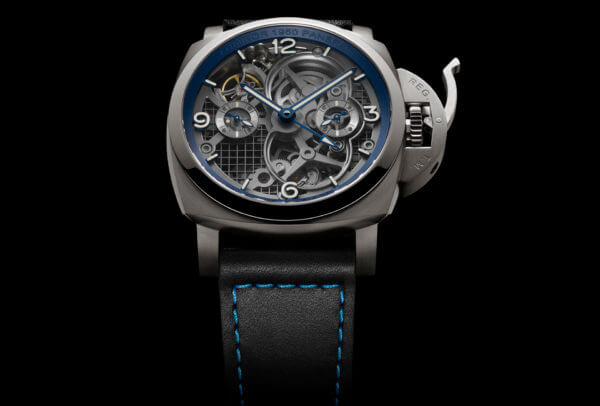There was a time when discussing complications came down to an inventory of a watch’s various functions. These mechanical attributes certainly haven’t disappeared, but science has given watchmakers a whole new playground that we could call “aesthetic complications”. Whether applied to the dial, the case or the watch as a whole, these innovations are intended not to improve the movement’s performance but to provide the wearer with an additional, “extra-ordinary” dimension.
Beauty and the beast
Cartier’s Révélation d’une Panthère is a stunning example, and probably one of the most talked-about pieces at SIHH 2018. Dial and hands are surmounted not by a conventional crystal but a sapphire capsule containing some 900 tiny gold beads in a transparent fluid. This liquid has been specifically developed so that its viscosity creates a slow-motion effect on the beads. With each flick of the wrist they trickle across the dial, briefly forming the face of Cartier’s treasured feline before breaking up again. This fleeting glimpse is made possible thanks to channels that are “grown” into the sapphire. A patent has been filed both for the fluid and the capsule.
In a completely different vein, Piaget pushes the aesthetic limits of its Altiplano Ultimate Concept. A specialist in extra-thin watches, the company produced the 9P manual-wind movement back in 1957. It measured 2mm high… which is the thickness of the entire watch revealed at this year’s fair. It’s an exploit that owes a lot to engineering. Firstly, the case is made from an ultra-rigid cobalt alloy to ensure it will retain its shape despite being so very thin. Secondly, whereas a watch is traditionally a four-layer sandwich, here there are only two. The back of the case doubles as a mainplate for the movement components, literally merging mechanics and exterior. So as to make effective use of the precious little space available, the balance wheel is above the balance spring and there is no balance-bridge. The mainspring has been stripped of its drum to be directly integrated into the frame. Some of the wheels measure a mere 0.12mm thick (compared to the usual 0.20mm); the crystal has been shaved down to 0.20mm. Even the alligator strap is devilishly thin, with the detail of a Kevlar core. Five patents have been filed.
Poised for 3D printing
No less impressive is the Panerai Lo Scienziato Luminor 1950 Tourbillon GMT, even though the “complication” isn’t immediately obvious. The tourbillon movement, which barely tips the scales at 23 grams, displays hours, minutes, small seconds, GMT and an indication of the six-day power reserve. But this isn’t the only exploit: here we have the first mechanical watch whose case (in titanium, which is 40% lighter than steel) is made by Direct Metal Laser Sintering (DMLS). This 3D printing technique can be used to create complex geometric shapes without compromising water-resistance or solidity. It’s easy to see how this technique could further develop, limited only by watchmakers’ imagination.

Last in this non-exhaustive list is the Richard Mille RM 53-01. Once again, movement and exterior merge to both visual and technical effect. Anticipating the knocks that the watch, made for the Argentinean polo player Pablo Mac Donough, is likely to suffer, the brand has suspended the movement inside the case – a technique already seen, for example, on the RM 27-01 for Rafael Nadal in 2013. This time, however, the construction is even more astounding: the mainplate is connected to a peripheral plate by two braided steel cables, just 0.27mm in diameter, that form a spider’s web. They are kept taut by a system of pulleys and tensioners. The overall effect is nothing short of spectacular. The Carbon TPT® case and the laminated sapphire glass (two layers of sapphire separated by a vinyl membrane) could almost go unnoticed.

















